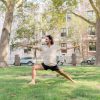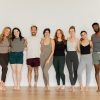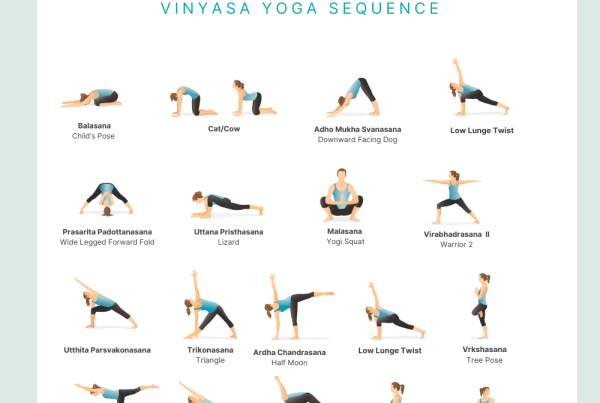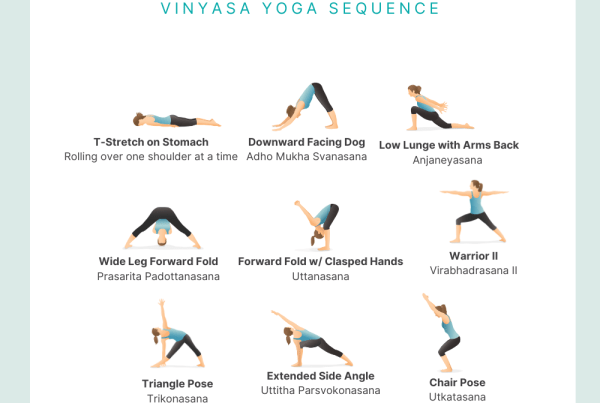Restorative yoga is a style of yoga that involves holding the yoga poses for a longer period of time, the use of yoga props, and the goal to create an environment where you can replenish and recuperate.
So many of us need to allow our bodies to recover, but we don’t always give ourselves the space and time to do so. Restorative yoga provides the tools to slow down and create the space where rest can happen. When your body is at rest, it can heal.
This style of yoga is fairly new and modern compared to other styles. It originated from the yoga teacher B.K.S. Iyengar, who was one of the yoga teachers who began using a lot of props to support the practice. It’s a style of yoga that can also be practiced by almost everyone.
Benefits of Restorative Yoga:
- Lowers anxiety
- Improves sleep quality
- Increases energy
- Releases tension
- Relieves stress
- Boosts your body’s recovery process
- Helps overcome depression
- Calms your nervous system
- Eases muscle tension
- Improves digestion
The restorative yoga practice activates something called the parasympathetic nervous system, which is the system that helps your body relax. Once this system is activated, your body can enter a state of rest. This is the state that allows your body to hit the brakes and begin its recovery.
In a restorative yoga class, you can expect to use some yoga props to help support you in each pose and you will also hold the poses much longer than you do in other styles of yoga. This helps bring your body into relaxation. When your body is in a relaxed state, your heart rate and breathing may slow down, your mind can become more calm, and your muscles will have a chance to recover.
Restorative Yoga and Anatomy
Almost everyone can practice restorative yoga because of its focus on prop use and modifications. This practice can be modified for almost every body and every need. It supports the individual’s anatomy and focuses on bringing each person to their specific place of comfort.
The anatomy of restorative yoga is really the honoring of your own anatomy and your own body’s requirements. It honors the concept that what may work for one person may not work for someone else. One of the goals of this practice is to help each person understand what they need to help their body heal.
How Restorative Yoga Differs from Yin Yoga
Restorative yoga originates from B.K.S. Iyengar and was created to help people recover from injuries and other health issues. Props are used to help your body feel fully supported and there may be some passive stretching. One goal is to help your muscles release.
Yin yoga originates from Paul Greeley and incorporates some Traditional Chinese Medicine principles. There aren’t as many props used in yin and the poses will bring you into more of an active stretch to reach the deeper tissues. This practice focuses more on releasing the connective tissue as opposed to the muscles.
Read this article for more information:
The Difference Between Yin Yoga and Restorative Yoga
Who can practice and what to expect in a restorative yoga class:
As mentioned earlier, almost anyone can practice restorative yoga. This is because it caters to finding the most comfortable setup for each individual person. It’s meant to be slow and relaxing, so don’t feel awkward or shy asking your teacher to help you adjust the poses. Whether you’re injured, working with an illness, or brand new to yoga in general, you can practice this style of yoga.
In a restorative class, expect to hold poses for a while and to also move gently in all directions. This means that almost your whole body will benefit from the practice. You’ll experience a deeper rest than you normally experience in other classes and your body will release tension.
Some Restorative Yoga Poses We Love:
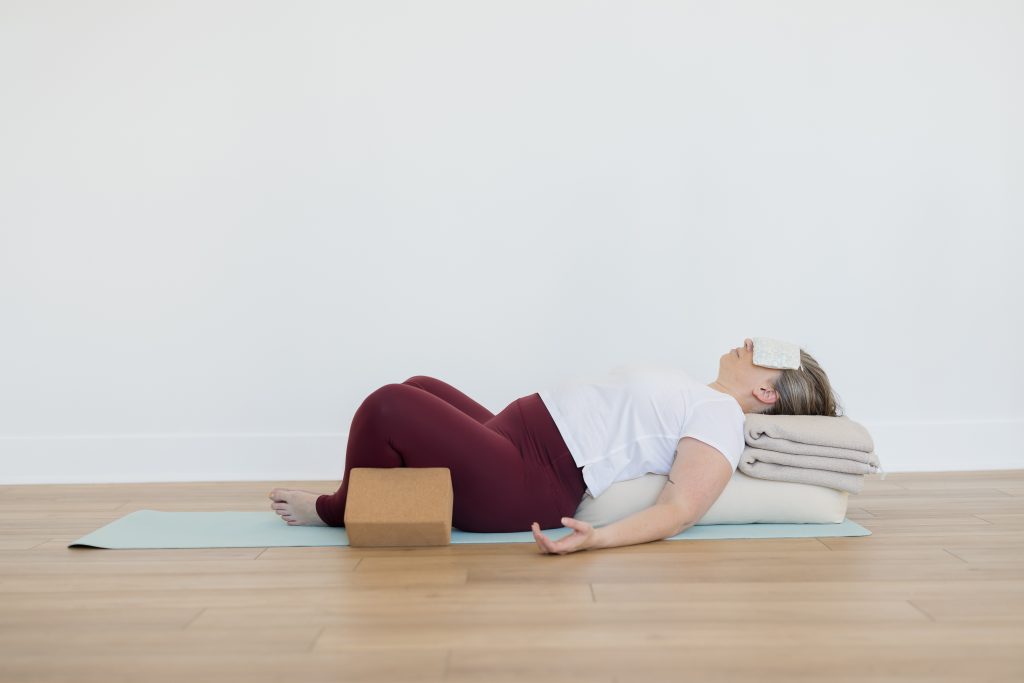
Supported Bound Angle (Sanskrit: Supta Baddha Konasana)
Supported Bound Angle (Supta Baddha Konasana)
How to:
- Begin by having two blankets, one bolster, and one eye pillow ready.
- Place one blanket where your head will go.
- Place one bolster with one blanket on top of it where your feet will go.
- Have your eye pillow close to your mat so you can reach for it when you need it.
- Lie down on your back and bring the blanket down to the lower part of your head, right above your neck. This should support your chin lining up with your chest. If your chin is sticking up towards the ceiling too much, simply make your blanket thicker by folding it again.
- Bring the soles of your feet together and place them on top of the stacked blanket and bolster.
- As you close your eyes, bring your eye pillow over them and extend your arms with your palms flipped up.
- Hold for 5-10 minutes.
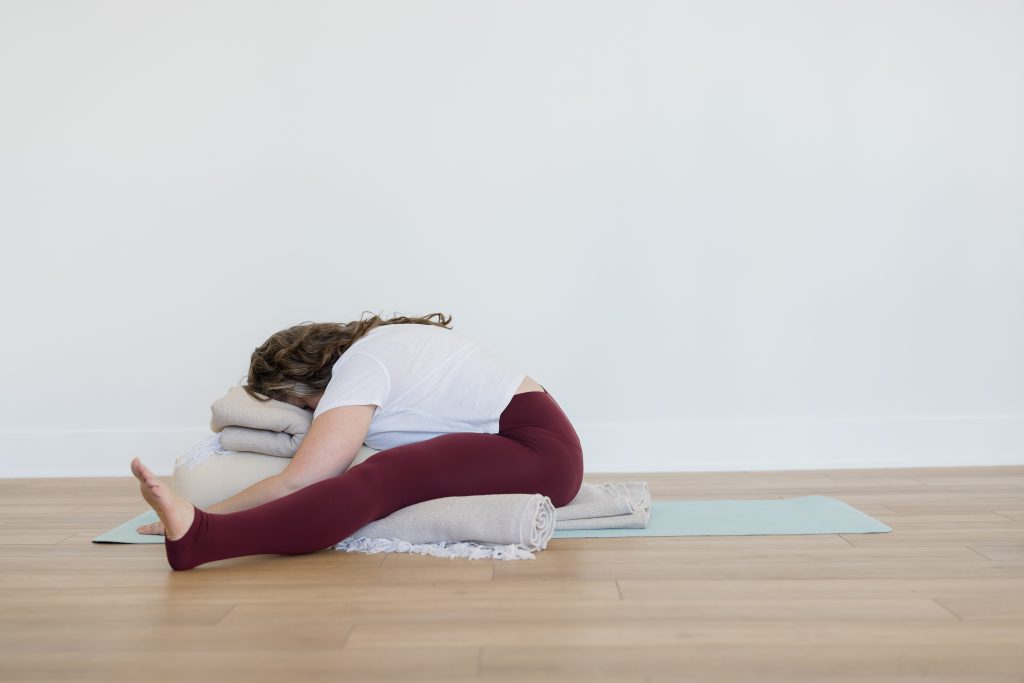
Supported Wide Legged Forward Fold (Sanskrit: Upavistha Konasana)
Supported Wide Legged Forward Fold (Upavistha Konasana)
How to:
- Begin by having four blankets and one bolster ready.
- Roll two of the blankets up along their long edges and place them off to the side.
- Fold another blanket up on its longer edge and sit at the edge of it.
- Widen your legs and place your bolster in front of you.
- Fold up a blanket and place it on top of the bolster.
- Slip the rolled blankets that you’ve set aside beneath your knees and release your head onto the bolster and blanket stack.
- Hold for 5-10 minutes.
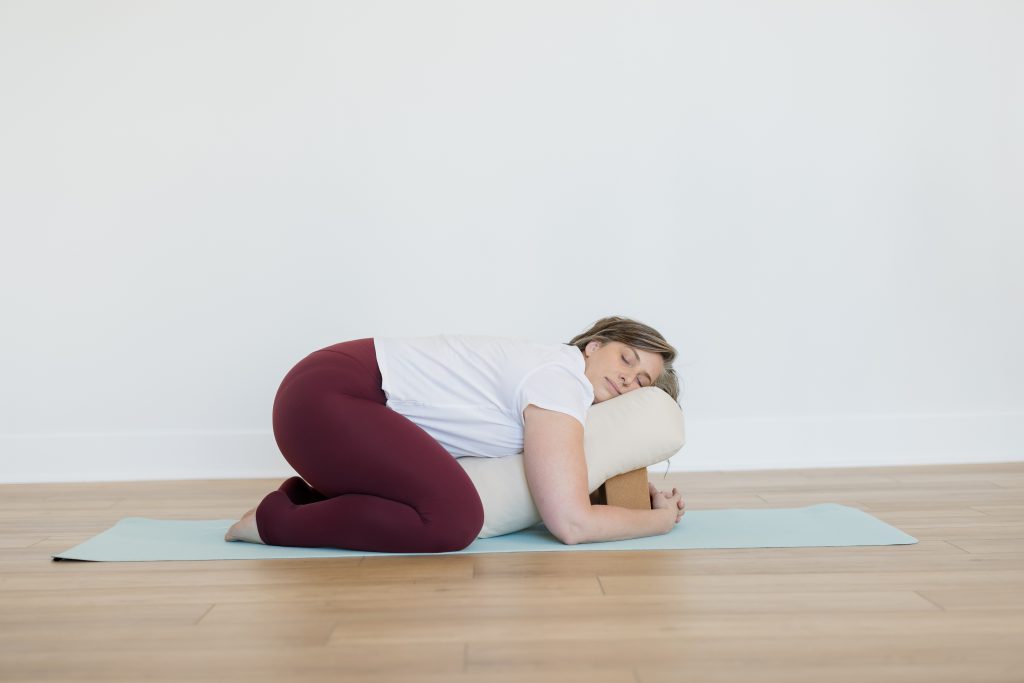
Supported Child’s Pose (Sanskrit: Bālāsana)
Supported Child’s Pose (Bālāsana)
How to:
- Begin by having one bolster and one block near.
- Set the block on its middle height.
- Place the tip of the bolster on top of the block.
- Come to your hands and knees facing the bolster and release your seat towards your feet and your cheek to one side on the bolster.
- Bring your hands forward and around the block.
- Hold for 5-10 minutes and then switch whichever cheek is on the bolster and hold again for another 5-10 minutes.
Restorative Yoga Teacher Training
Practice with our Restorative YTT instructor, Joanne Silver in the Energy Restoring Practice above. To enroll in a Restorative Online Yoga Teacher Training, click here: Restorative Yoga YTT


